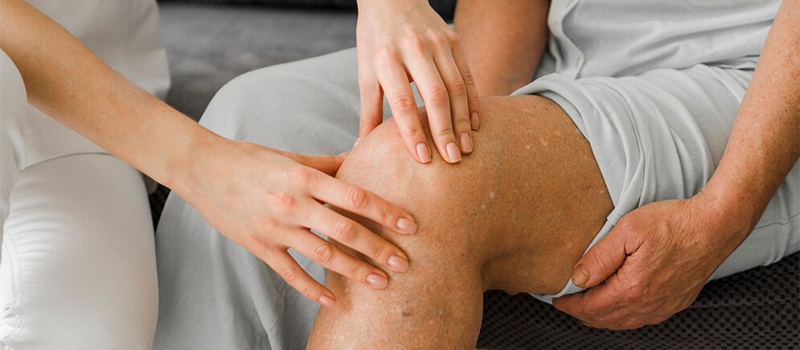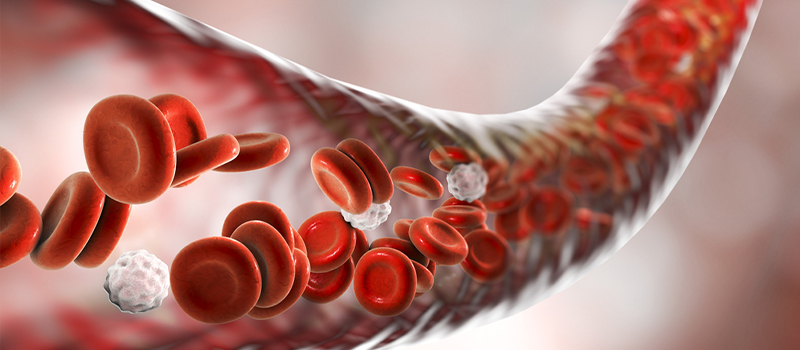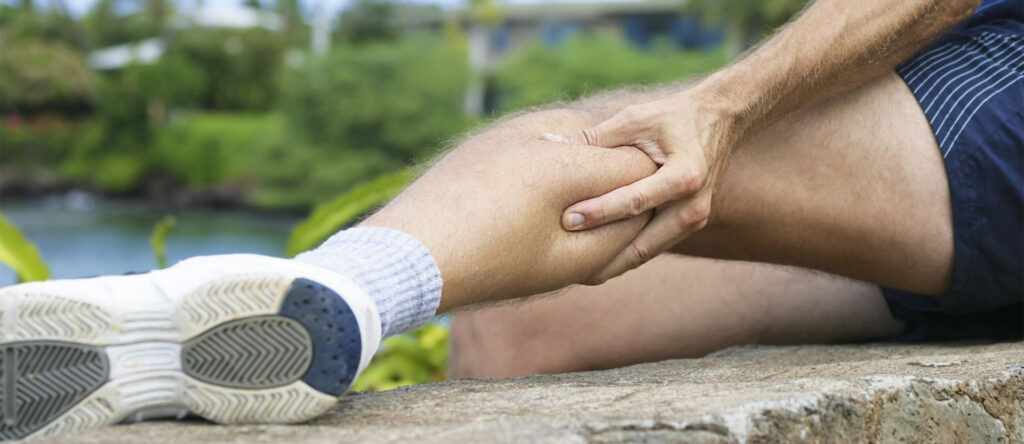A considerable percentage of people visit their primary care physicians to report calf pain. This pain affects the back part of the lower leg. Several conditions can cause the pain, with the most common being muscle strains, nerve damage and injuries.
Pain in your calf can also result from poor circulation, which is insufficient blood flow to your lower limbs. This article explores how poor blood circulation can cause calf pain.

How Poor Blood Flow Relates to Calf Pain
Your circulatory system sends blood, nutrients, and oxygen throughout your body to various organs and tissues. Poor circulation refers to inadequate or reduced blood flow to and from certain areas of your body. This can lead to a variety of symptoms.
Impaired blood movement in itself is not a condition but rather the result of various conditions. These may include:
- Peripheral artery disease – Build up of fatty deposits and waste in your arterial walls. This condition causes your blood vessels to narrow.
- Deep vein thrombosis – The formation of blood clots in deep veins. Your lower limbs are usually the most affected region.
- Varicose veins – The development of enlarged or twisted veins just under the skin. This condition can increase blood pressure and cause pooling.
- Diabetic neuropathy – Refers to nerve damage that occurs due to diabetes. It commonly affects your legs and feet.
- Chronic venous insufficiency – The malfunction or damage of valves in your veins. It causes blood to flow backward and pool in the affected regions (usually the legs).
- Obesity – The extra weight places pressure on your circulatory system, increasing your chances of developing vascular conditions.

The above conditions and others can cause narrowing of arteries, artery blockage and blood vessel damage. Consequently, you experience impeded blood movement throughout your circulatory system.
Regardless of the underlying condition, poor circulation in your legs means your muscles, bones and other tissues are not getting enough nutrients as well as oxygen. As such they cannot function properly hence resulting in periodic muscle pain or cramps. This condition is known as intermittent claudication. It mostly affects the calves but can also affect your thighs, feet and hips.

Typically, you experience the symptoms during physical activity, with the pain subsiding during rest. The primary symptoms include sharp and stabbing pain or a dull and throbbing ache. You may also experience discomfort and stiffness in your calf muscles. In many cases the pain occurs after walking or running for a certain period or when you stand on your toes.
Your calf area may also exhibit tightness, numbness, or weakness. The perceived level of pain can vary from mild to severe. Note that although the pain usually subsides with rest, if the underlying condition and circulation problem worsen, it can occur during rest.
Conclusion:
Calf pain can be a sign of a serious underlying cardiovascular condition. As such, if you display the symptoms mentioned above, do not hesitate to consult a vascular specialist. This is more so if the pain is recurring and is accompanied by swelling, redness or tenderness.

Diagnosing and treating calf pain early is important for preventing the progression of the causative conditions. Washington Vascular Specialists employs skilled and experienced physicians who can monitor leg pain to help diagnose and manage any underlying vascular ailments. Feel free to book an appointment or contact us today to learn more about our services.



